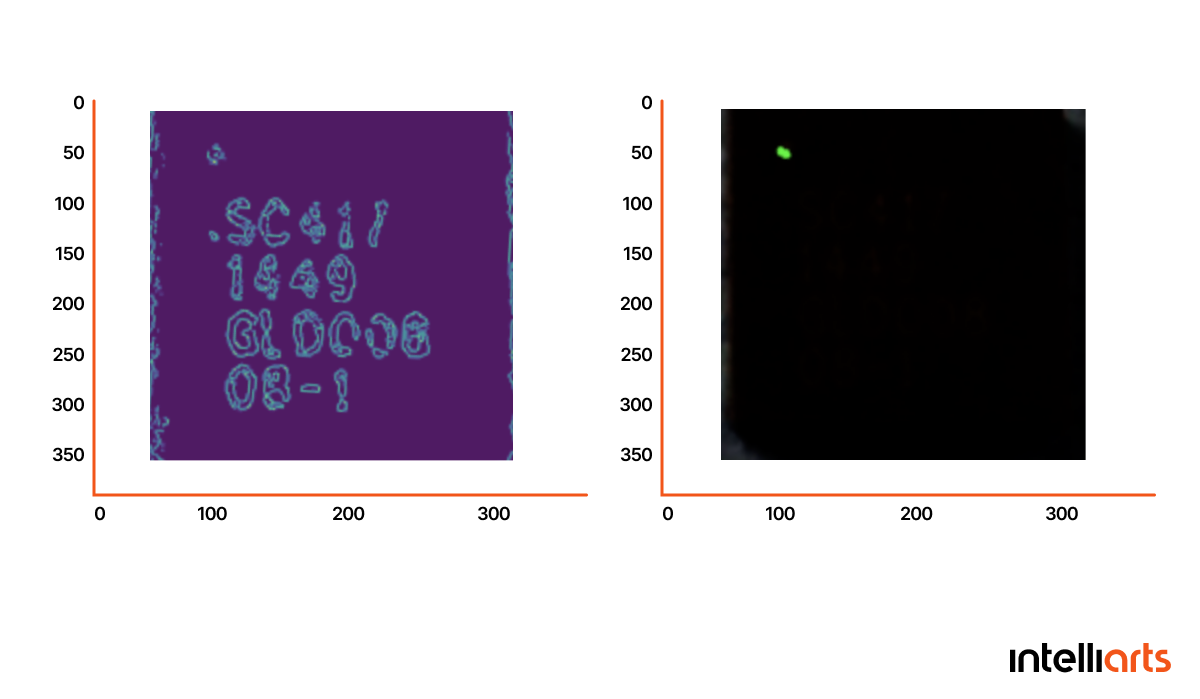Solution Highlights
- Built the prototype for the ML model to double-check falsely detected polarity issues
- Received over 90% accuracy in the model results, which promised fewer false alarms and uptime improvements
- Advised the company to collect more data synthetically for higher predictive power
- Expected more quality products since operators wouldn’t waste time checking false calls

About the Project
Customer:
Our customer (under NDA) is a world leader in producing printed circuit boards (PCBs), schemes, and chips for companies from various industries. Quality is a top priority for the manufacturer so it places high value on product inspection and defect detection.
Challenges & Project Goals:
The company reached out to us to reduce the number of false calls on polarity checks detected by their Automated Optical Inspection (AOI) system. Repeated false calls caused downtimes on the Surface Mount Technology (SMT) production line and resulted in losses related to extra human inspection and delays in delivering PCBs to customers.
Solution:
Together with the customer, we decided to build a machine learning model whose task would be to double-check whether the polarity issue was actually present and reduce downtimes in the production line.
Business Value Delivered:
- We built the prototype for the ML model that had to solve the customer’s business challenge with a large number of repeated false calls in the SMT line.
- The model showed more than 90% of accuracy in results, which should grant the company fewer false alarms and uptime improvements.
- Still, we advised the company to gather more data synthetically to strengthen the predictive power of the ML model.
- The manufacturer can expect an increase in quality — the AOI operators will check fewer chips because the model excludes false detections, and they would be less tired and more attentive.
- The manufacturer could also save on labor costs since the ML-powered solution will process falsely detected polarity issues automatically.
ML Development, Data Analysis
Technology Solution
To address the problem of repeated false calls detected in the SMT line, we offered to build an ML-powered solution that should double-check polarity defects detected by the AOI machine. Here is how the project progressed:
- The customer provided us with a dataset of images detecting polarity defects spotted by the AOI system. So, we piloted the project with data ingestion and data analysis to make sense of the data, seek patterns, and test the customer’s hypotheses.
- The exploratory data analysis (EDA) helped us discover the lack of images with polarity issues. Only 164 images proved to be false positive, i.e. depicting the false polarity defects detected by the AOI, which we could use to feed and test our future ML solution. Since we needed these images to test the algorithm properly, we offered the manufacturer to help to collect more data synthetically.
- The EDA also provided us with important insight into the “correct” polarity position to be able to check whether the polarity defect was present or not in a more effective way.
- Our next step was to build the prototype of the ML model. Our data scientists applied a classical computer vision approach using the OpenCV library. Specifically, we took a random image of a chip and tried to detect the white marking that represented polarity. The Intelliarts team experimented with different degrees of darkening the image to improve the accuracy of the results. We also used an edge detection algorithm to find essential edges and the coordinates of edges in the desired area.

- The ML model we built showed 90%+ accuracy in results. Still, the dataset was limited so we insisted on collecting more data synthetically to be able to test the algorithm properly and improve the predictive power of the solution.
- After enough data is collected, the manufacturer should get a fully-integrated ML model for detecting false polarity issues so the company will be able to save labor costs and reduce downtimes in production.
Business Outcomes
The Intelliarts team provided the manufacturer with a prototype for the ML-powered solution to double-check polarity issues detected in the SMT line.
After more data is gathered synthetically to test the algorithm properly, the customer would be able to build the ML model with over 90% accuracy and that is integrated into the existing AOI system. As a result, the manufacturer will be able to:
- Reduce the number of false alarms causing lengthy delays in production and costly downtimes
- Save labor costs as the falsely detected polarity issues could be detected automatically
- Experience uptime improvements due to the ability to prevent downtimes and increase product quality since the AOI operators won’t need to waste time on checking falsely detected polarity issues











